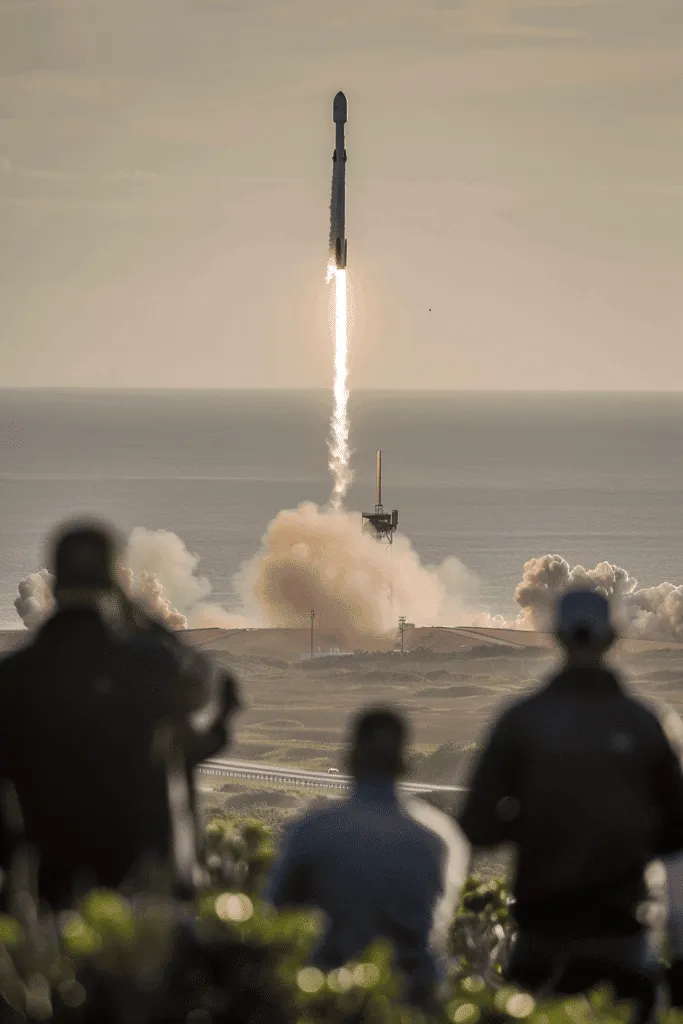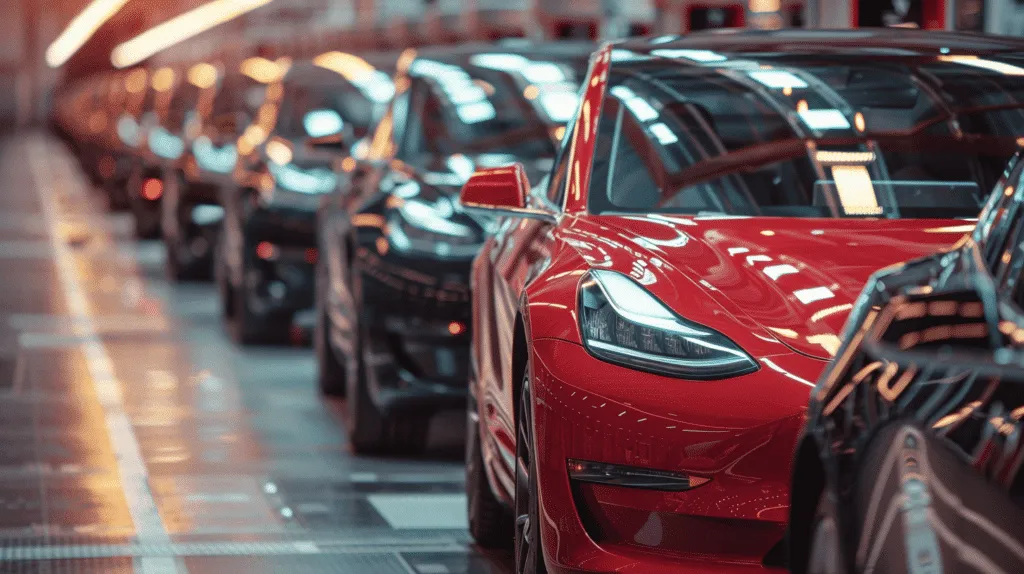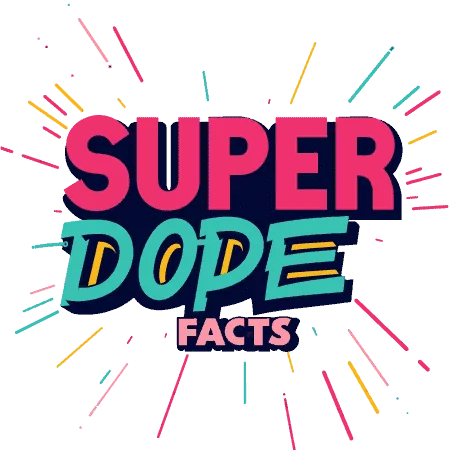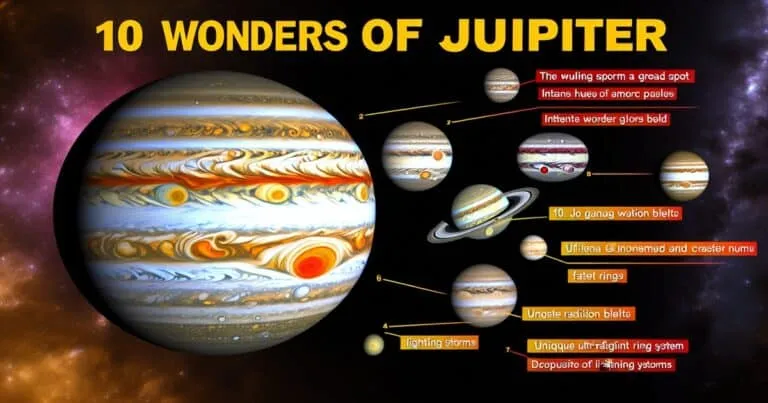10 Elon Musk Facts (From PayPal to SpaceX & Beyond)
Elon Musk, the visionary behind SpaceX and Tesla, has become a household name, but there’s more to him than rockets and electric cars.
From his early days creating video games at 12 to envisioning a future on Mars, Musk’s life is filled with fascinating tales that sound like they’re straight out of a sci-fi novel.
But it’s not just about space and tech; his unique approach to problem-solving and innovation has left an indelible mark on various industries
Dive into these lesser-known facts about one of the most intriguing figures of our time. Scroll down for insights into our top picks that reveal the man behind the headlines.
1. Born on June 28, 1971, in Pretoria, South Africa
Elon Musk’s journey began in Pretoria, South Africa. Here, he spent his early days before making a big move to the United States. His childhood was marked by an intense curiosity about the world around him.
From a young age, Elon showed an incredible interest in computing and business. He taught himself computer programming and even sold his first software at just 12 years old! This early start laid the foundation for what would become a remarkable career in technology and entrepreneurship.
Holding citizenships in South Africa, Canada, and the United States makes Elon Musk a true global citizen. Each of these countries has played a role in shaping his outlook and opportunities. The diverse cultural experiences have undoubtedly contributed to his unique approach to problem-solving and innovation.
His story is not just one of success but also of relentless pursuit and passion for learning. From selling homemade video games as a kid to revolutionizing industries with companies like SpaceX and Tesla Motors as an adult—Elon’s life shows us that curiosity can lead you anywhere.
2. Founded X.com in 1999, which later became PayPal
In 1999, Elon Musk started X.com with a big idea: to make money move around the world online. It was one of the first online banks, aiming to change how people handle their finances.
Just a year after its launch, X.com merged with another company called Confinity. This merger was crucial because Confinity had something special – a money transfer service named PayPal.
The blend of these two companies’ strengths made PayPal stand out in the early days of internet commerce. People could easily send and receive money or pay for things online without sharing their bank account or credit card details each time.
This innovation caught the eye of eBay, one of the biggest online marketplaces back then. In 2002, eBay decided that having PayPal would make buying and selling on its platform smoother and safer for users. So, they bought PayPal for an impressive $1.5 billion.
What’s fascinating is how this foundation laid by Musk has grown over years into what we know today as modern digital payments’ backbone – facilitating transactions worth billions every year across borders effortlessly.

3. Launched SpaceX in 2002 with the goal of reducing space transportation costs
In 2002, Elon Musk founded SpaceX with a vision that seemed almost out of this world: to make it cheaper to travel to space. The idea was not just about launching rockets but revolutionizing how we approach space exploration.
One of the most groundbreaking achievements of SpaceX is being the first private company to send a spacecraft to the International Space Station (ISS). This was a game-changer. Before this, only government-funded agencies had accomplished such feats.
SpaceX didn’t stop there. They developed the Falcon rockets and Dragon spacecraft, which have become key players in delivering cargo—and more recently, astronauts—to orbit. These innovations have significantly lowered the cost of reaching Earth orbit.
But why do all these matter? Because behind every rocket launch and new spacecraft design lies Musk’s ultimate aim: enabling humans to live on Mars. It sounds like something from science fiction, but with each successful mission, this dream inches closer to reality.

4. Became CEO of Tesla Motors in 2008, revolutionizing the electric car industry
In 2008, Elon Musk took the helm as CEO of Tesla Motors and set off a revolution in the electric car industry. Under his leadership, Tesla introduced several groundbreaking vehicles:
- The Tesla Roadster
- Model S
- Model X
- Model 3
- Model Y
Each of these cars pushed the boundaries of what electric vehicles (EVs) could be. They combined style, performance, and long-range capability that were unheard of in EVs before.
Musk didn’t stop at just creating cool cars; he also pioneered advancements in battery technology. This made it possible for electric cars to travel longer distances on a single charge. Plus, he was a big proponent of autonomous driving features. These innovations have not only changed how we think about driving but also paved the way for future transportation.
Another key commitment from Musk was making affordable electric vehicles accessible to more people. He understood that for electric cars to truly impact the environment positively, they needed to be within reach for average consumers.
5. Announced the Hyperloop concept in 2013, a high-speed transportation system
In 2013, Elon Musk introduced the world to the Hyperloop concept. This public transportation system isn’t just any ordinary way to travel. Imagine gliding at speeds over 700 mph through low-pressure tubes. Yes, you heard it right – traveling faster than most commercial airplanes without leaving the ground!
The secret behind this incredible speed? Air cushion pods that float inside these tubes, drastically reducing friction and allowing for such high velocities.
But here’s where it gets even more interesting. Instead of keeping this groundbreaking technology under wraps or patenting it for personal gain, Musk decided to open-source the design and information about Hyperloop. His vision was clear: encourage brilliant minds worldwide to contribute and further develop this revolutionary public transportation system.
Think about what this means for us! Cities that once seemed hours away could now be reached in minutes, transforming how we think about distance and time in our daily lives.
- Speed: Over 700 mph
- Design: Low-pressure tubes with air cushion pods
- Open Source: Encourages global innovation
6. Acquired SolarCity in 2016, expanding into sustainable energy solutions
In 2016, Elon Musk made a significant move towards sustainable energy by acquiring SolarCity. This acquisition was more than just a business deal; it was a step towards creating a future where our energy needs are met through entirely renewable sources.
SolarCity focused on developing solar energy products that were both innovative and accessible. One of their standout introductions was the Solar Roof tiles. These tiles were not only functional, converting sunlight into electricity but also aesthetically pleasing, blending seamlessly with traditional roofing materials.
Musk’s vision went beyond just generating clean energy. He aimed to create fully sustainable energy ecosystems for homes and businesses alike. This means not only producing solar power but also storing it efficiently for use when the sun isn’t shining.
- Key Components of Musk’s Sustainable Energy Vision:
- Development of high-efficiency solar panels.
- Introduction of aesthetically pleasing Solar Roof tiles.
- Creation of home battery products like the Powerwall to store surplus energy.
7. Launched Neuralink in 2016, aiming to connect the human brain to computers
In 2016, Elon Musk took a giant leap towards merging humanity with technology by launching Neuralink. This ambitious company is working on developing implantable brain-machine interfaces (BMIs). The goal? To bridge the gap between the human brain and computers.
Neuralink focuses on two main areas:
- Treating neurological conditions such as Alzheimer’s and spinal cord injuries.
- Enhancing human cognitive capabilities, potentially allowing us to communicate with machines or even download our thoughts.
Imagine playing a video game just by thinking about it or downloading new languages directly into your brain!
The team at Neuralink has already conducted several successful trials on animals. These experiments have shown promising results, paving the way for future human trials. The idea of humans controlling devices or communicating through thought alone might sound like science fiction, but with Musk’s track record of turning the impossible into reality, it could be closer than we think.
For those who dream of superhuman abilities or hope for cures to debilitating neurological conditions, Neuralink represents a beacon of hope. It’s not just about connecting our brains to computers; it’s about unlocking the untapped potential of the human mind.
8. Initiated The Boring Company in 2016, focusing on tunnel construction and infrastructure
In 2016, Elon Musk launched The Boring Company with a vision to revolutionize the way we think about city travel. His main goal? To slash through the snarl of urban traffic by creating an extensive network of underground tunnels.
This wasn’t just any tunnel construction project. Musk proposed two groundbreaking rapid transit systems: the Loop and Hyperloop. Imagine zipping beneath the city’s chaos at speeds unheard of above ground, turning hours-long commutes into minutes.
But how did he catch everyone’s attention? By selling flamethrowers as a promotional item! Yes, you read that right. In what might be one of the most unconventional marketing moves ever, The Boring Company branded flamethrowers flew off the shelves, proving that Musk knows how to spark interest among investors and the public alike.
Behind this seemingly playful stunt was serious work. These sales not only generated buzz but also funneled much-needed funds into research and development for tunnel construction technologies—technologies aimed at making settlements more connected than ever before without adding to surface-level congestion.
9. Played a key role in rescuing the Thai soccer team from Tham Luang cave in 2018
Elon Musk stepped in during the crisis of the Thai soccer team trapped in Tham Luang cave in 2018. He didn’t just watch; he acted by offering mini-submarines to aid the rescue operation. This wasn’t a small gesture. Imagine having technology at your fingertips and deciding to use it for good, especially in a situation as dire as this.
Musk didn’t stop there. He provided not only these innovative submarines but also his engineering expertise and resources from his companies. It was like having a superhero without a cape come to their aid with gadgets that could potentially save lives.
However, despite this grand offer, the mini-submarines were ultimately not used in the rescue mission. The situation on ground required different solutions, and while Musk’s submarines were an incredible showcase of problem-solving and innovation, they weren’t fit for this particular task.
But let’s think about what this shows us about Elon Musk. Here is someone who sees a problem and immediately thinks of how he can help solve it using technology and innovation. Even though his solution wasn’t used, it sparked conversations around alternative rescue methods and demonstrated out-of-the-box thinking when facing critical challenges.
10. Transitioned Twitter into X in 2022, emphasizing freedom of speech and platform evolution
In a bold move, Elon Musk acquired Twitter for approximately $44 billion in 2022. His vision? To transform the popular social media platform into an “everything app.” This idea isn’t just about changing how we tweet or what posts we see. It’s about revolutionizing our online interactions.
Musk’s focus is clear: enhance user experience and improve content moderation. By doing so, he aims to create a space where freedom of speech thrives alongside responsible use of the platform.
Imagine logging onto X (formerly Twitter) and finding more than just tweets. Picture a place where you can shop, chat, and even book appointments—all within one app. This is the future Musk envisions for X.
Improving content moderation means creating smarter filters for posts, ensuring harmful or misleading information doesn’t spread unchecked. But it also means respecting users’ rights to express themselves freely—a delicate balance that Musk is determined to achieve.
Frequently Asked Questions
What did Elon Musk do before PayPal?
Before founding X.com, which became PayPal, Elon Musk was involved in a web software company named Zip2. It’s like he was warming up before hitting the big leagues with PayPal.
How has SpaceX changed space travel?
SpaceX made history by slashing the cost of reaching orbit. Think of it as SpaceX turning space travel from a luxury cruise into an economy flight—still out of this world but more accessible.
Why is Tesla so important to the electric car industry?
Under Elon Musk’s leadership since 2008, Tesla has been like the cool kid that made electric cars popular. They’ve shown us that electric vehicles can be fast, sexy, and environmentally friendly all at once.
Can you explain what Hyperloop is?
Imagine shooting through a tube faster than an airplane—that’s Hyperloop for you. Announced by Elon Musk in 2013, it’s like sci-fi transportation come to life, aiming to whisk people between cities in minutes.
What’s unique about Neuralink’s goals?
Neuralink is working on meshing our brains with computers. Sounds like something out of a movie, right? But really, they’re pushing towards enhancing human cognition—potentially upgrading our mental capabilities beyond natural limits.
Why did Elon Musk start The Boring Company?
Started in 2016 because he was fed up with traffic jams; think of The Boring Company as his way of digging us out of congestion woes—literally. It focuses on building affordable tunnels for faster urban transport without the gridlock above ground.
How did Elon Musk contribute to rescuing the Thai soccer team?
In 2018 when a Thai soccer team got trapped in Tham Luang cave, Musk threw his hat into the rescue ring by offering technology support and brainstorming solutions—a true testament to using innovation for humanitarian efforts.






